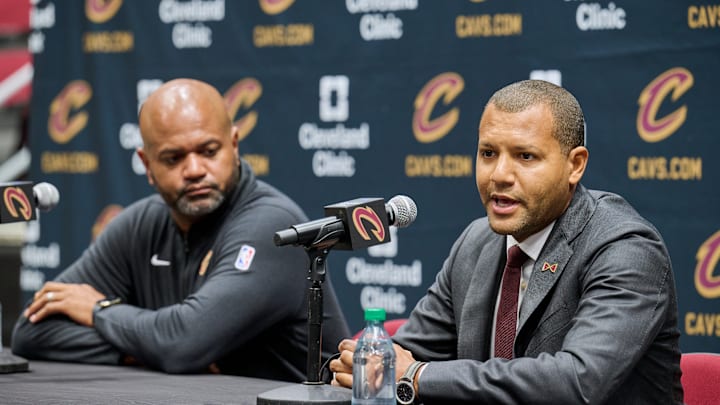Lineup Redundancy
In August of 2021, Koby Altman would make another move that showed willingness to bring in talent regardless of the lineup fit. Altman was able to trade for rising star Lauri Markkanen by only giving up Larry Nance, Jr. and a protected second-round pick. It was great value by Markkanen, but a strange move to make when the Cavaliers had just traded for Jarrett Allen in January (at great value, another of Altman's best moves) and drafted Evan Mobley in the summer. In the modern NBA filled with speed and floor spacing, the Cavaliers were starting three seven-foot-tall players, and only one of them could shoot.
Yet, the Cavaliers still overachieved in 2021-2022 due to the breakout season of Darius Garland. It was clear that in order to get the best out of Garland, it would be best to move on from Collin Sexton who missed most of the season with injury. This lineup redundancy would be rectified by Koby's greatest trade of his tenure. In the summer of 2022, the Cavaliers would trade Collin Sexton, Lauri Markkanen, Ochai Agbaji, three unprotected first round picks and two pick swaps for Utah Jazz All-Star Donovan Mitchell.
Koby was able to do something the Cleveland Cavaliers franchise rarely ever pulls off; he successfully brought in a superstar via trade. However, the Cavaliers would continued to be haunted by their lineup redundancies even after bringing in the talents of Donovan Mitchell. The Cavaliers backcourt was still undersized with Garland and Mitchell, neither guard being above 6-foot 3-inches. On top of that, the Cavaliers chose to start their 2020 fifth overall draft pick, Isaac Okoro at the small forward position. Okoro is only listed at 6-foot 4-inches, giving the Cavaliers serious size challenges on the perimeter.
However, the Cavaliers lineup problems were not just about height and size. There wasn't enough consideration put into making sure there was enough shooting and space on the floor. In the 2023 postseason, the Cavaliers were starting Okoro, Mobley and Allen. The New York Knicks did not respect any of those players from the three-point arc, and the Cavaliers were unable to create lanes as the Knicks bottled up the inside. Mobley was a 21-percent three-point shooter that year, Okoro was 36 percent from deep.
In the summer of 2023, Koby Altman made some moves to try and correct those issues. He signed Max Strus and Georges Niang. Strus was to come into the small forward position and bring more shooting and spacing than Okoro could. Niang would provide shooting at the power forward position off the bench to create lineups that could be stronger from the outside.
While Max Strus is a good and proven playoff performer, he is also only 6-foot 5-inches, continuing the trend of undersized players for their position. This reared its head in the playoffs, when Orlando Magic's star Paolo Banchero and Boston Celtics' star Jayson Tatum would both feast on the smaller wing defenders. Both players were able to get into their spots and shoot over the smaller defenders with ease. If the Cavaliers want to slow down the better forwards in the league, they are going to need more size on the wing, and Strus and Okoro don't fit that mold.
Georges Niang is a career 38-percent from the field in the postseason. The Cavaliers were taking a small risk bringing him in when he had never performed well during the playoffs, and that gamble did not pay off as Niang shot an abysmal 20 percent in round one and 25 percent in round two. He played himself out of the rotation, and the Cavaliers were still looking for a reliable stretch-four. Ironically, they had just let go of the perfect one a year ago when they lost Markkanen.
